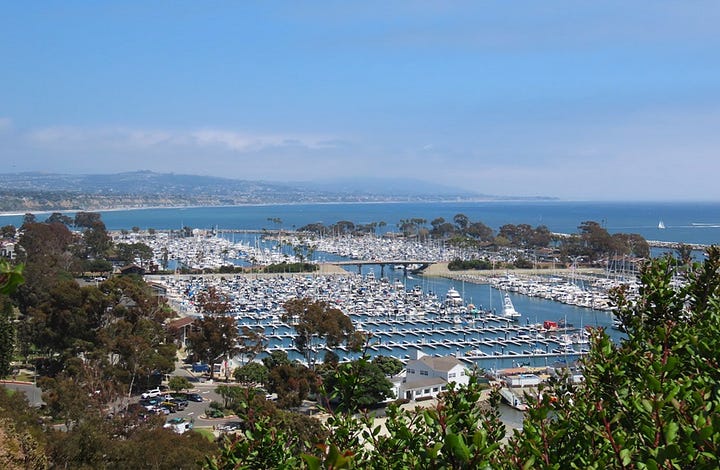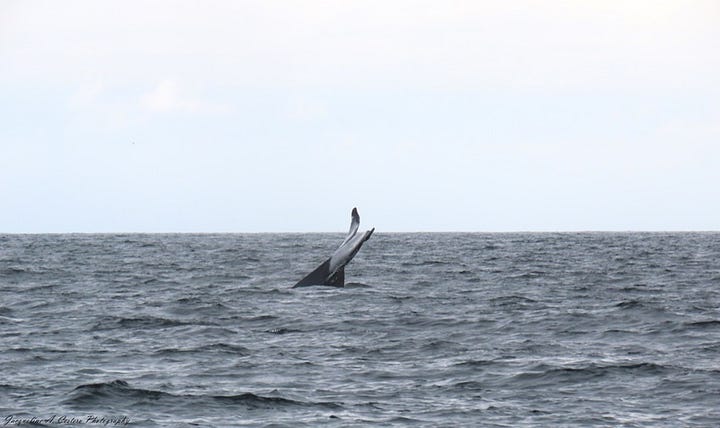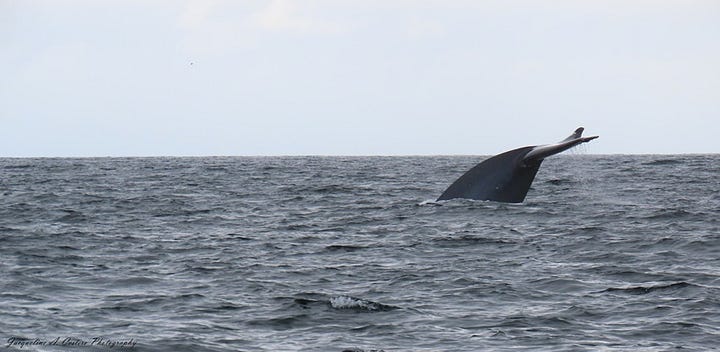A goal for my trip to California was to take an excursion with Dana Point Whale Watching. I followed this company for some time on social media and was impressed with its ability to find wildlife on each trip. My dear friend Miya Yoshida and I have talked about taking on this adventure for some time. We finally made a plan together.


Upon entering this coastal town north of San Diego, I wasn't sure what to expect. I found a location steeped in history with great restaurants and lots of boating.
Located in the Dana Point Harbor is Dana Point Whale Watching. It is a relatively small spot that provides both fishing and whale watching. The harbor is a buzz of activity from restaurants to shops.
The most captivating site was the boats adorned with several Black-crowned Night Herons. With a primary diet of fish and marine organisms, I expect they are well-fed by the local fishing boats. I recorded six birds before the trip and another two juveniles on the return. California Gulls, Cormorants, Royal Terns, Great Blue Herons, and many Brown Pelicans were also seen.
While the Cliff Swallows of Capistrano have seen a population decline due to development, Barn Swallows were present and, nesting underneath the gangways. This little one was in the mood for a paparazzi session!
We were scheduled for a 4:30 departure to search for whales and other amazing life. The gloom showed up just in time, but we raced for the known feeding area of the Blue Whales. There was no mistaking the blow of the Blue Whales on the horizon. This species can exhale water more than thirty-nine feet in the air. That is pretty hard to miss!
Approximately five miles out, we were surrounded by whales.
The Blue Whale is the largest animal recorded on earth, at 80 to 100 feet long and weighing between 330,000 and 418,000 pounds (the female is larger than the male). Their lifespan is 80 to 90 years. It is said their tongue weighs as much as an elephant!
IFAW gives us this grim picture:
“The largest animal in the world was once brought shockingly close to extinction by relentless whaling. There used to be over 250,000 blue whales in our oceans, but hunting reduced blue whale numbers to just a few hundred. Although the hunting of blue whales is now banned by the International Whaling Commission, there are still very few blue whales compared to the days before whaling.”
According to Naturist Nona (above), the Blue Whale migrates to this area each year and feeds on the Krill that are abundant in these waters.


Unlike the Humpback Whale that migrates through Anguilla’s waters, the Blue Whale does not breach regularly. It arches in the water and the big excitement occurs when it displays its fluke. We saw this behavior twice on the two-hour trip.
We were lucky to see a mother and her calf during the excursion. “Adult female blue whales usually give birth to an infant every two to three years, after a pregnancy of approximately 11 months.”
At birth, a Blue Whale calf weighs between 5,000 and 6,000 pounds. During the first six months, the calf will drink 100 gallons of the mother’s fatty milk daily.
The official Blue Whale count for the trip was 7, but it seemed like more. We were also treated to a small Mola Mola on the return to the dock. You can see it in the companion reel below.
We have joined the exclusive 1% club (“those folks that have had the privilege to go whale watching and see the largest, longest, and loudest animal on Earth!”) The crew handed out this button at the end of the trip! It’s an experience we won’t soon forget.
Are you part of the 1% club? If you have ever seen a Blue Whale, I would love to hear about it. Don’t be shy - share your photos too!
I will share a few tips from this first outing:
Grab a spot on the bow for the best viewing
Book early and online
Wear layers because it can be much cooler on the water
Take multiple trips because every excursion is different
If you want to learn more about Blue Whales, you can view the Nat Geo video.
Here is the footage from the excursion taken with a GoPro.
Stay tuned for the second trip we took a few days later!
https://www.ifaw.org/uk/animals/blue-whales
https://uk.whales.org/whales-dolphins/facts-about-blue-whales/













Wow! This looks amazing! Thanks for sharing. We are heading to Alaska next week and hopefully we will see a few whales.
Very impressive!!! Well done Jackie!